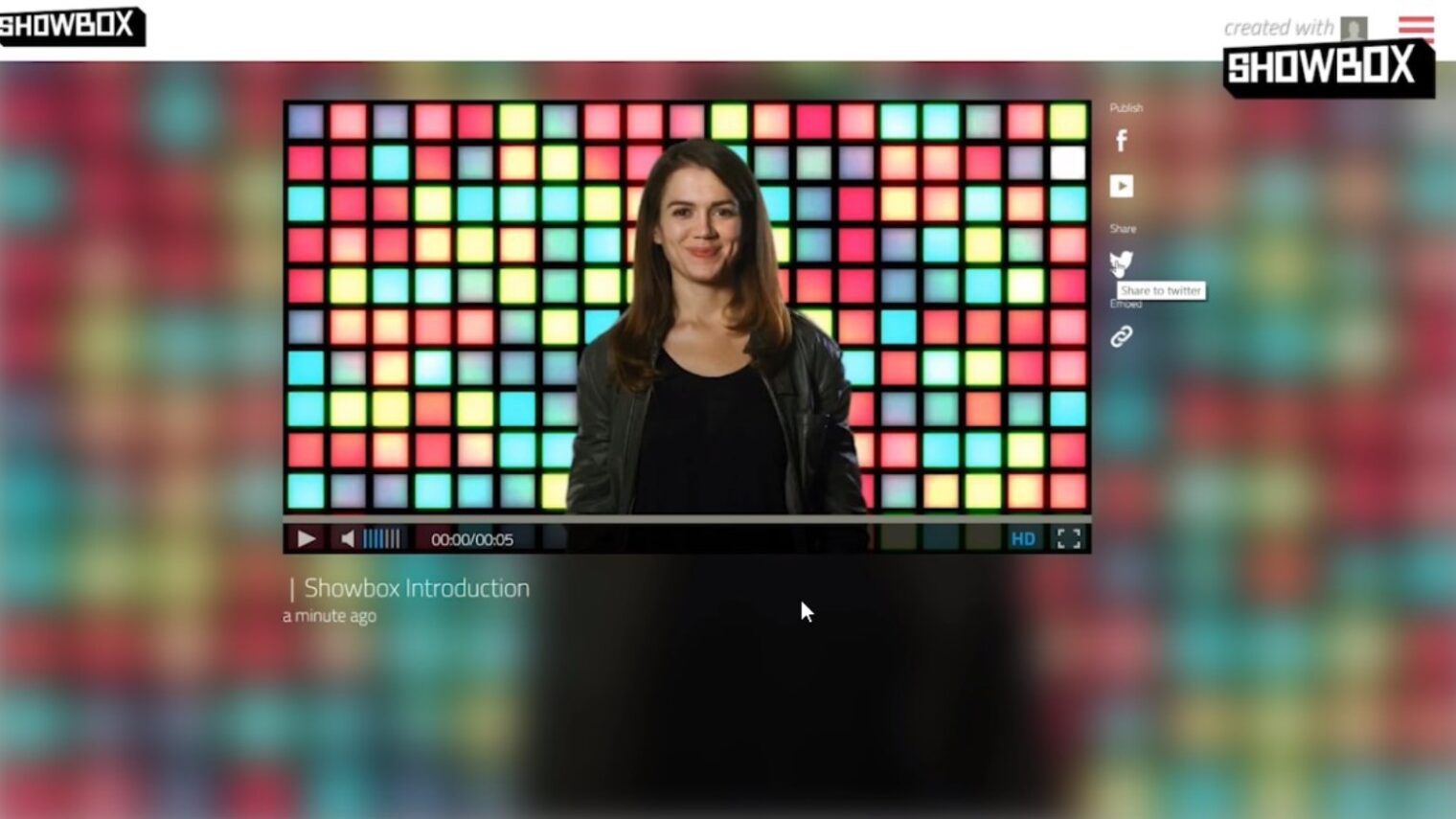Showbox wants to be the Wix of video editing. Like fellow Israeli startup Wix, which allows users to drag and drop images and text to build a free website, Showbox brings a similar simplicity to online video.
Showbox CMO Tomer Afek likens his company’s product to LEGO – just snap the pieces together according to the instructions. “I don’t have design skills,” he admits to ISRAEL21c, “and I still manage to create awesome-looking content on Showbox.”
To make your video, first choose a template and a theme. Showbox has dozens of them, ensuring that “no two shows will ever look the same, even if the same format is chosen,” according to Afek. There are templates for Top 5 lists, tutorials, product reviews, fashion and food reviews, or you can make your own from scratch.
Showbox then walks you step-by-step through creating a spiffy video according to the theme you’ve chosen. Type in some opening text; upload video or use your webcam to take fresh footage; choose from among the thousands of graphic and video elements Showbox has licensed from Reuters, Shutterstock, Flickr and Getty Images; add music (your own or from Showbox’s library of 4,000 tracks); and click Publish.
Everything renders in the cloud; Showbox sends you a link when your video is ready. Then it’s one more click to distribute it to social media. Afek says you can create a complete high-quality video in 15 minutes.
If you opt for a paid package, you get extra features such as custom landing pages and the ability to syndicate content. Otherwise, the processis free and Showbox displays a small watermark on screen and a short “bumper” at the conclusion of the video.
No green screen needed
Showbox has spent some $7 million developing the product since the company was founded in 2012. It launched out of beta earlier this year.
Among the serious technologies that Afek says were “extremely tough to master” are cool transitions, automatic music leveling, digital make-up “to make you look younger in real time,” and the ability to key out the background so you appear to be in a virtual studio, without an expensive green screen.
The virtual studio is a big part of Showbox’s value proposition for its other two customer targets: brands and publishers, who pay Showbox based on the number of views their videos receive.
Once you’ve set up a standard template, you can re-use it to create new content on your own, or you can share your virtual studio with outside creators who can help expand your network of presenters on the cheap.
https://www.youtube.com/watch?v=wDwLYnydUaY
Showbox worked with Israeli television network Reshetto create a significant amount of web material using just such third-party presenters.
“First Reshet created their branded environment with Showbox,” Afek explains. “Then they invited vloggers (video bloggers) into this environment to present on a certain subject. Within a month, they had 500 clips created. Each clip had an average of 5,000 views. As a result, they got to 25 million views organically at about one percent of the cost that paid media would have taken.”
Showbox is in the process of concluding similar deals with many of the top US web-publishing networks. These “multi-channel networks” are what make YouTube more than just stupid pet tricks; the largest MCN has more than 70,000 presenters, each of whom would get a Showbox login.
Another piece to Showbox’s LEGO approach is forming a talent network of all presenters in a partner MCN. They will thus be able to receive bids for work on other video programs.
“We let the publishers search by different criteria, approve the presenter, track and monitor the performance of each,” Afek says. This allows brands to scale up slowly and less expensively “rather than signing one big check for a Hollywood-style production. Showbox takes a 25% cut of fees paid to presenters.
From concept to distribution
According to a study by Cisco, video will account for some 80% of all consumer traffic on the Internet by 2019. That’s up from 64% from 2014. Websites like Buzzfeed and Vox are pumping out three to five new videos a day. Showbox is the only way for less well-funded brands, publishers and creators to compete, Afek asserts. The old system – $50,000 and three weeks to produce – just won’t fly in today’s lightning-fast social media milieu.
Showbox has plenty of competition in the video-making space, but Afek says there are big differences. Online services like Magisto and Animoto create short clips while Showbox makes full programs with a narrative thread. Offline services like iMovie and Avid are powerful post-production tools, while Showbox offers the entire process, from concept to distribution.
Established by Afek with Effie Atad,the Tel Aviv-based Showbox now has 33 employees. Afek was previously at the Israeli venture capital firm Evergreen where he was in charge of Internet and video investments. Atad pitched Showbox to Evergreen and Afek wound up leaving his VC job for the startup life.
When Wix went public in 2013, it nabbed $120 million. Showbox has raised just under $10 million so far but there’s a “big Series B round in the making,” Afek says.
When that happens, an enterprising vlogger will probably create a video about it – built using Showbox.
For more information, click here.














